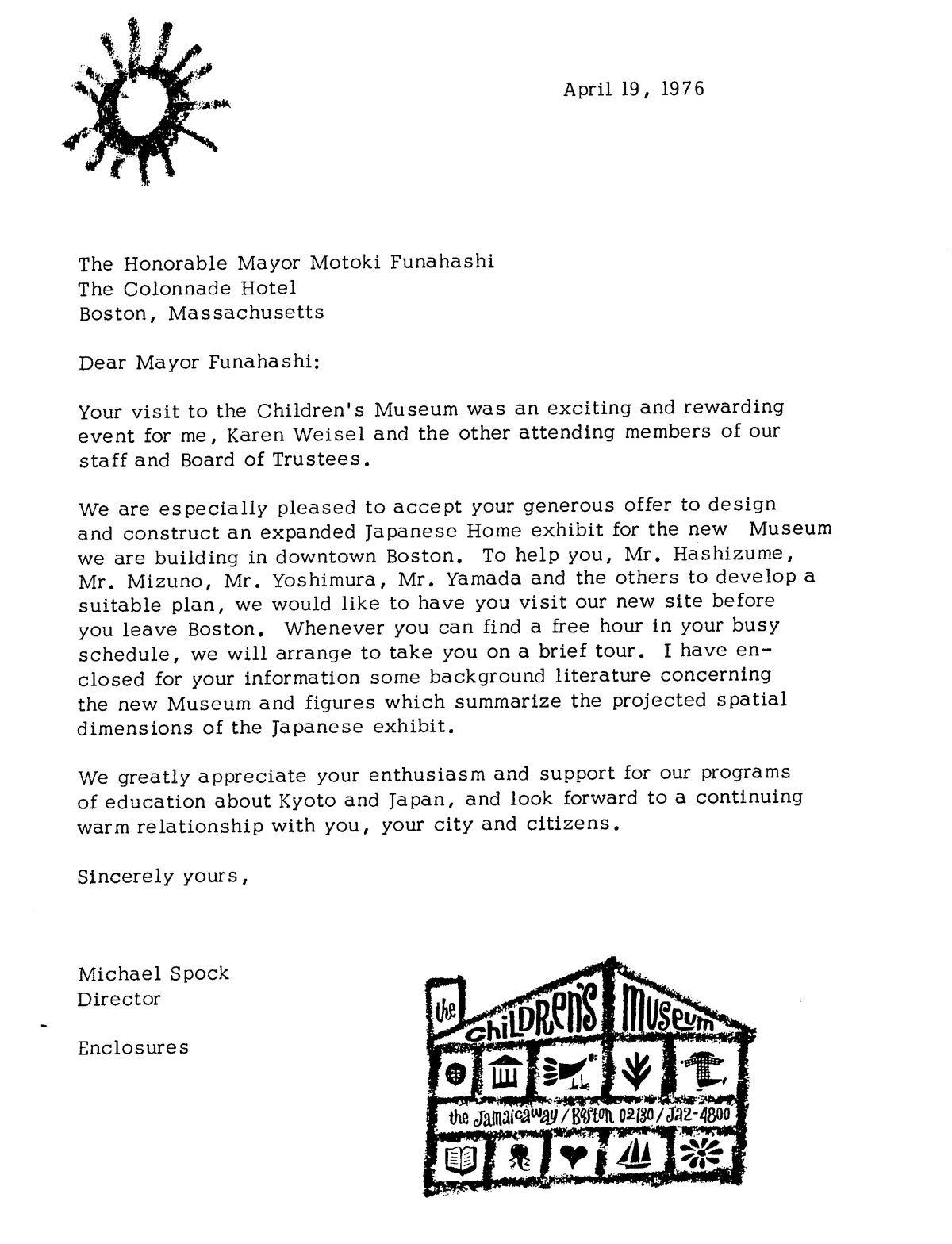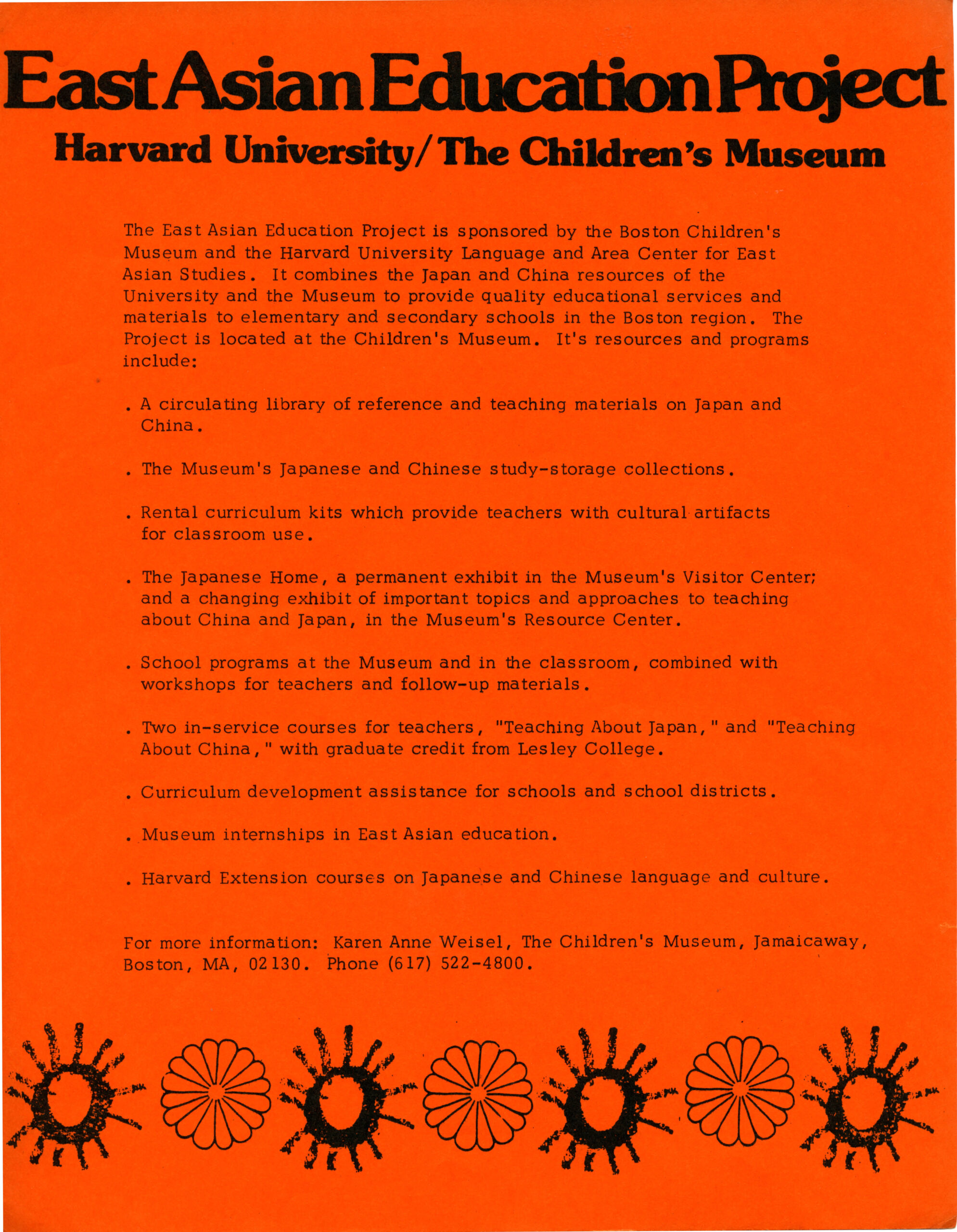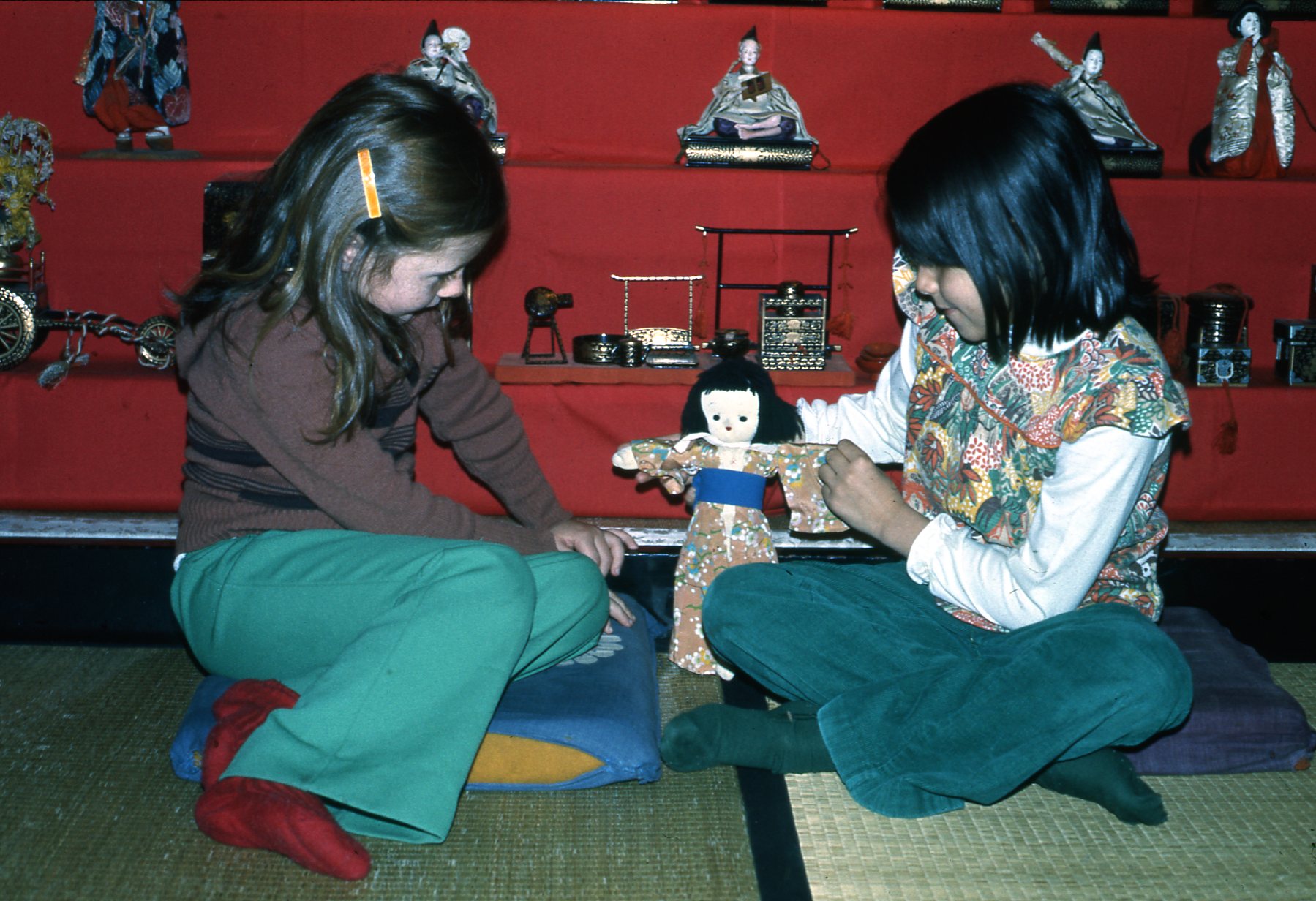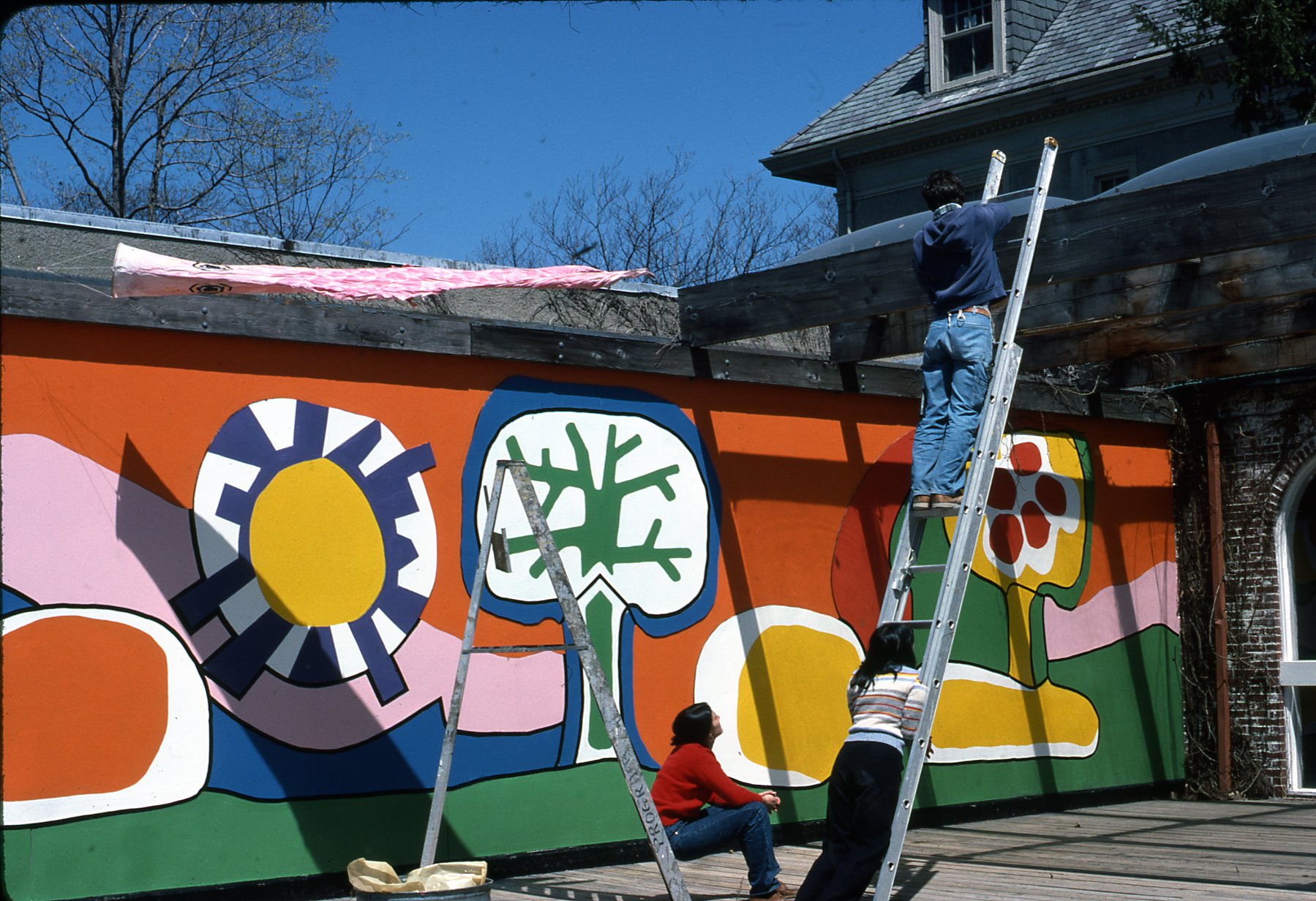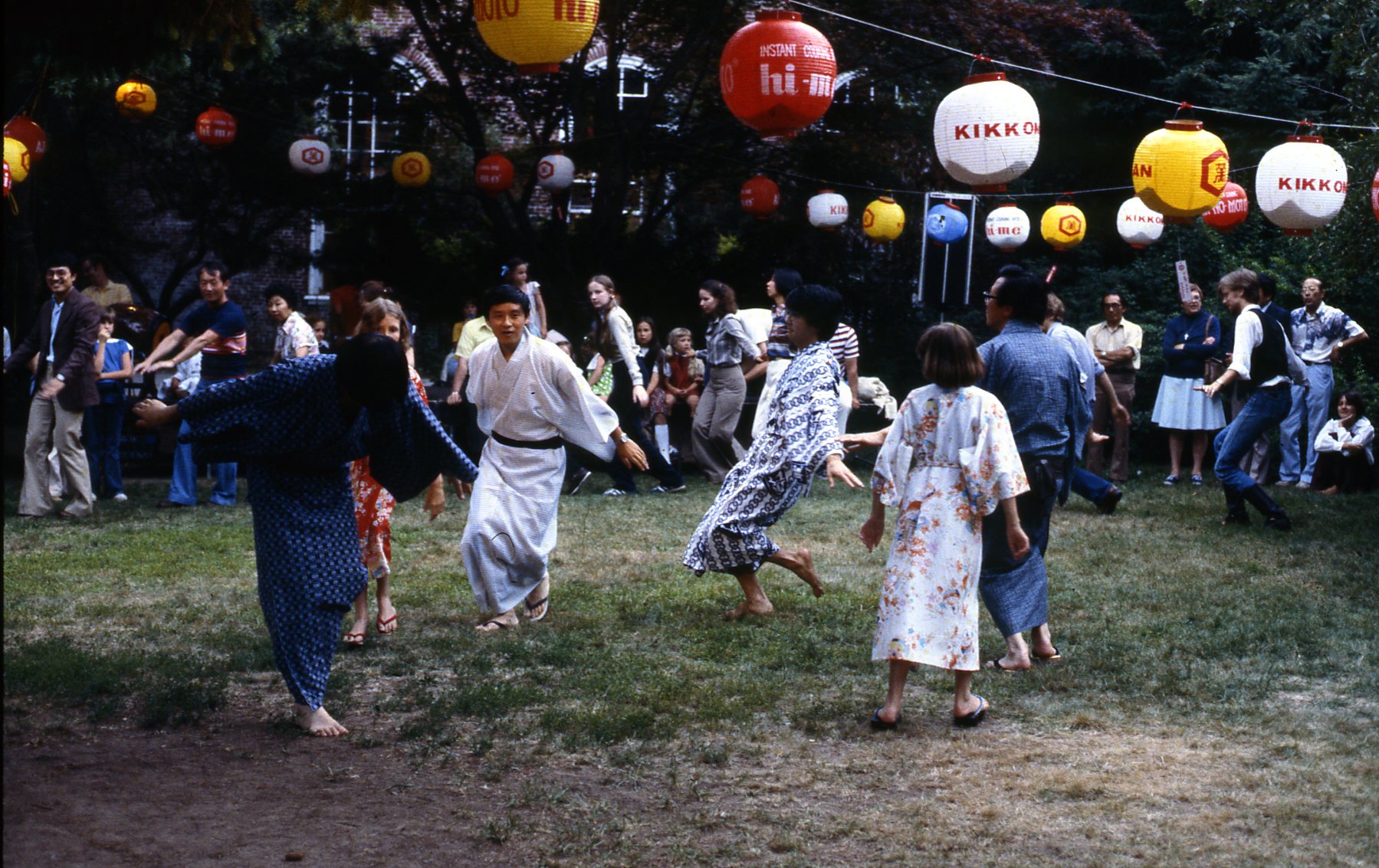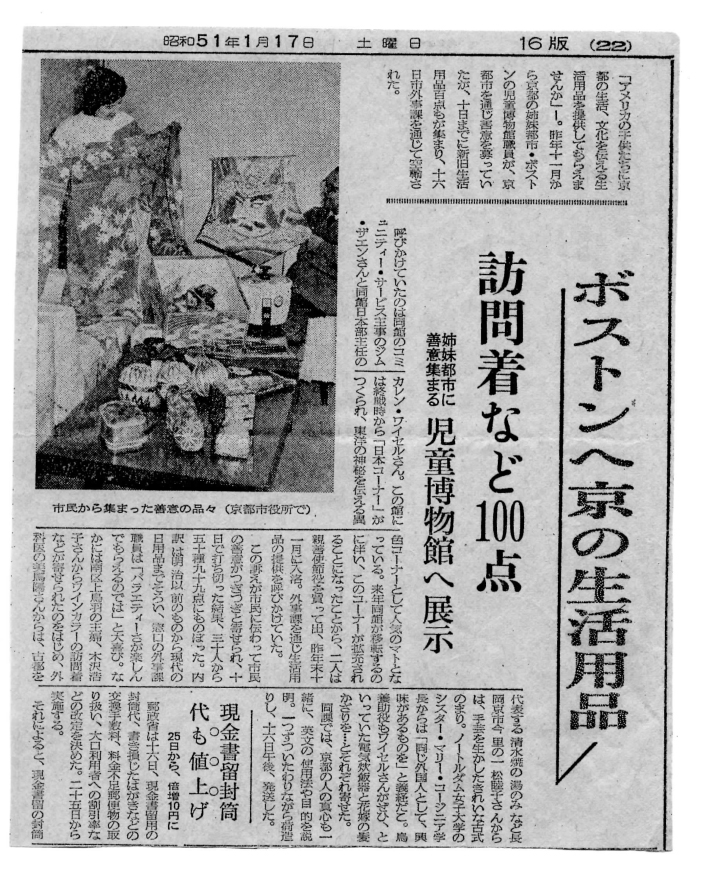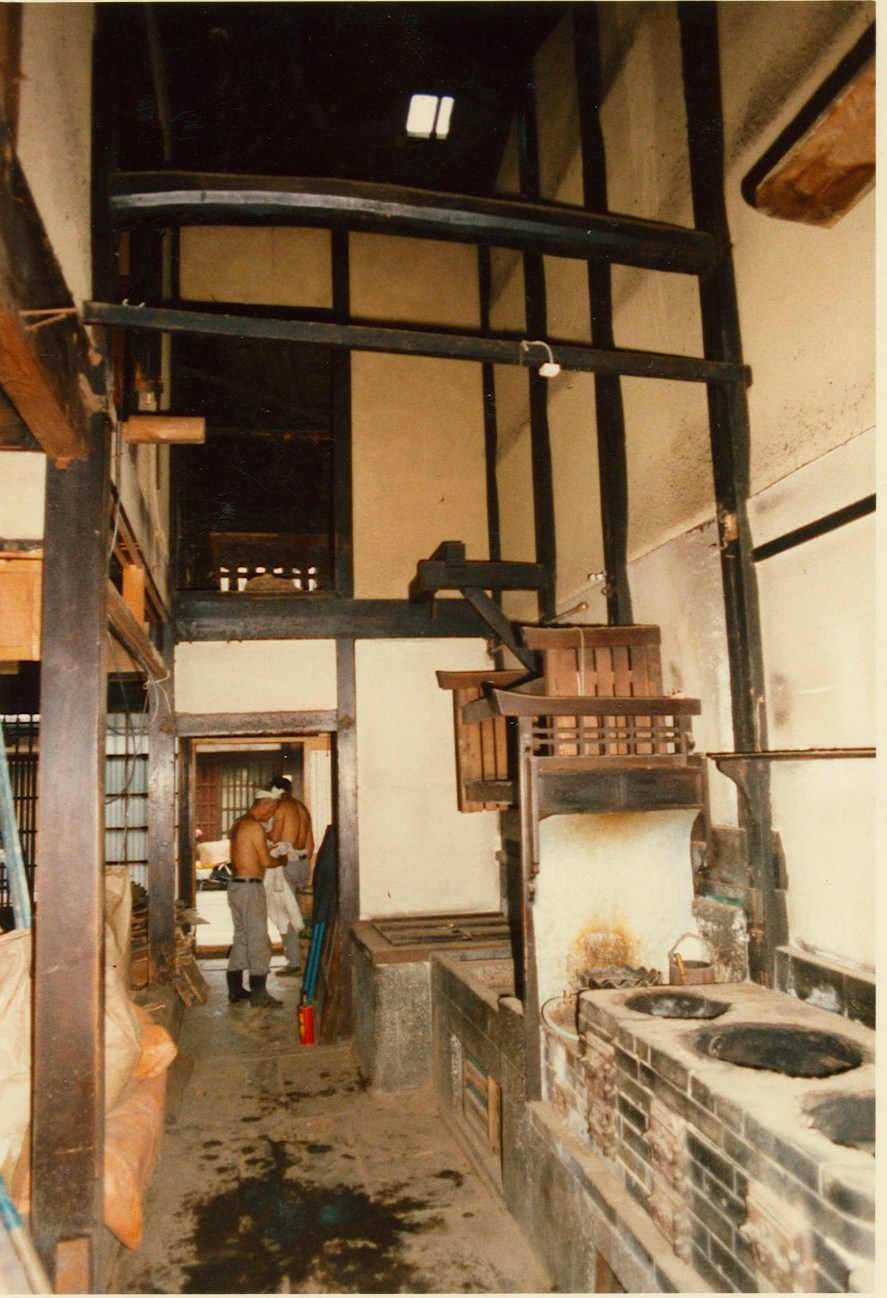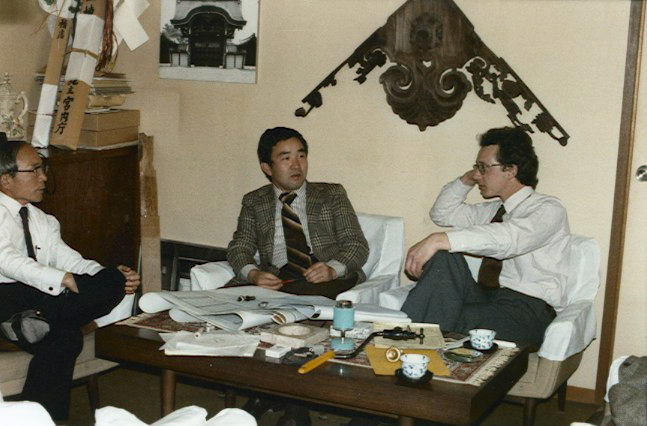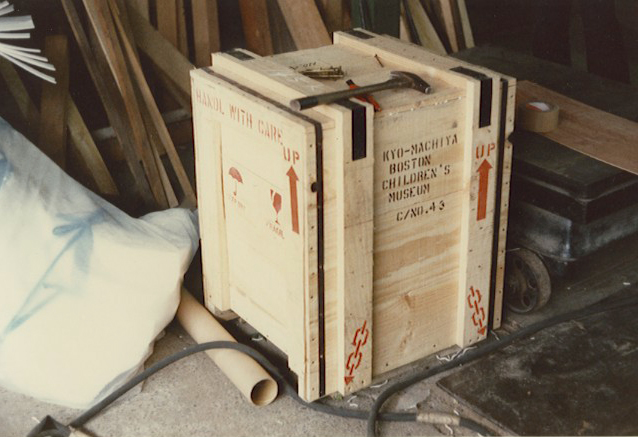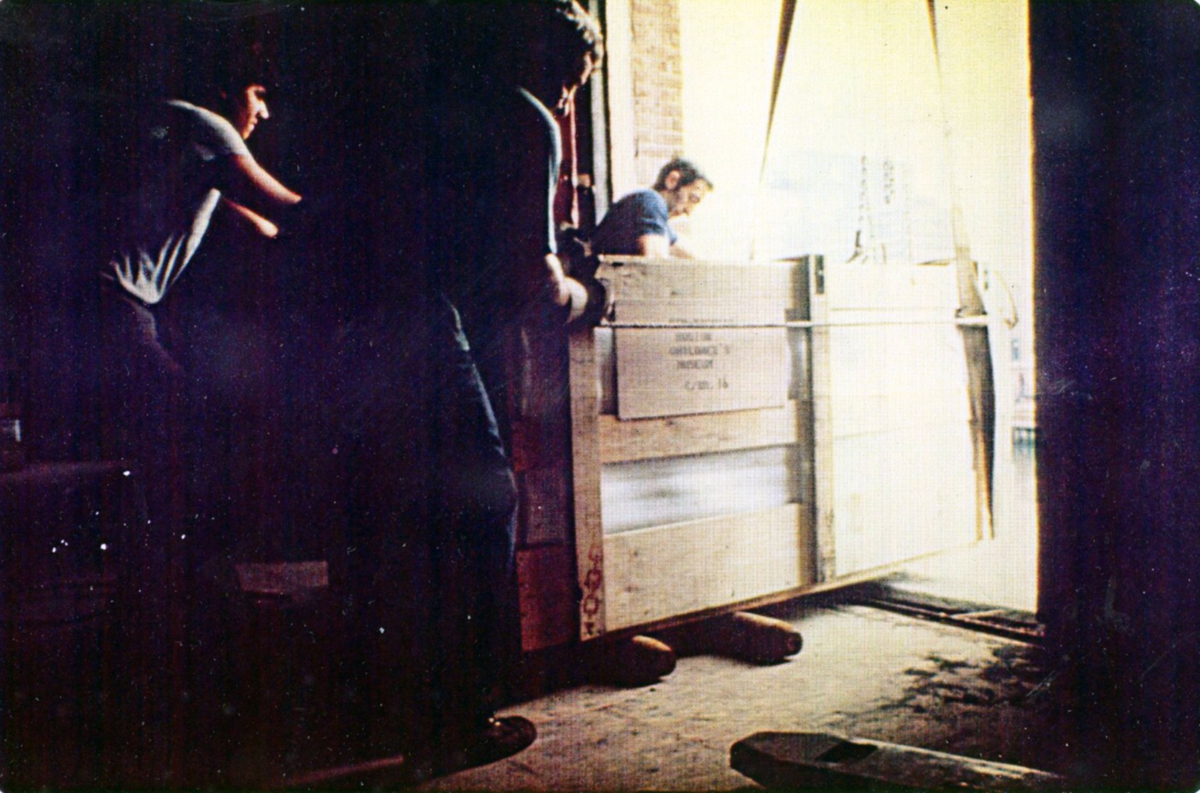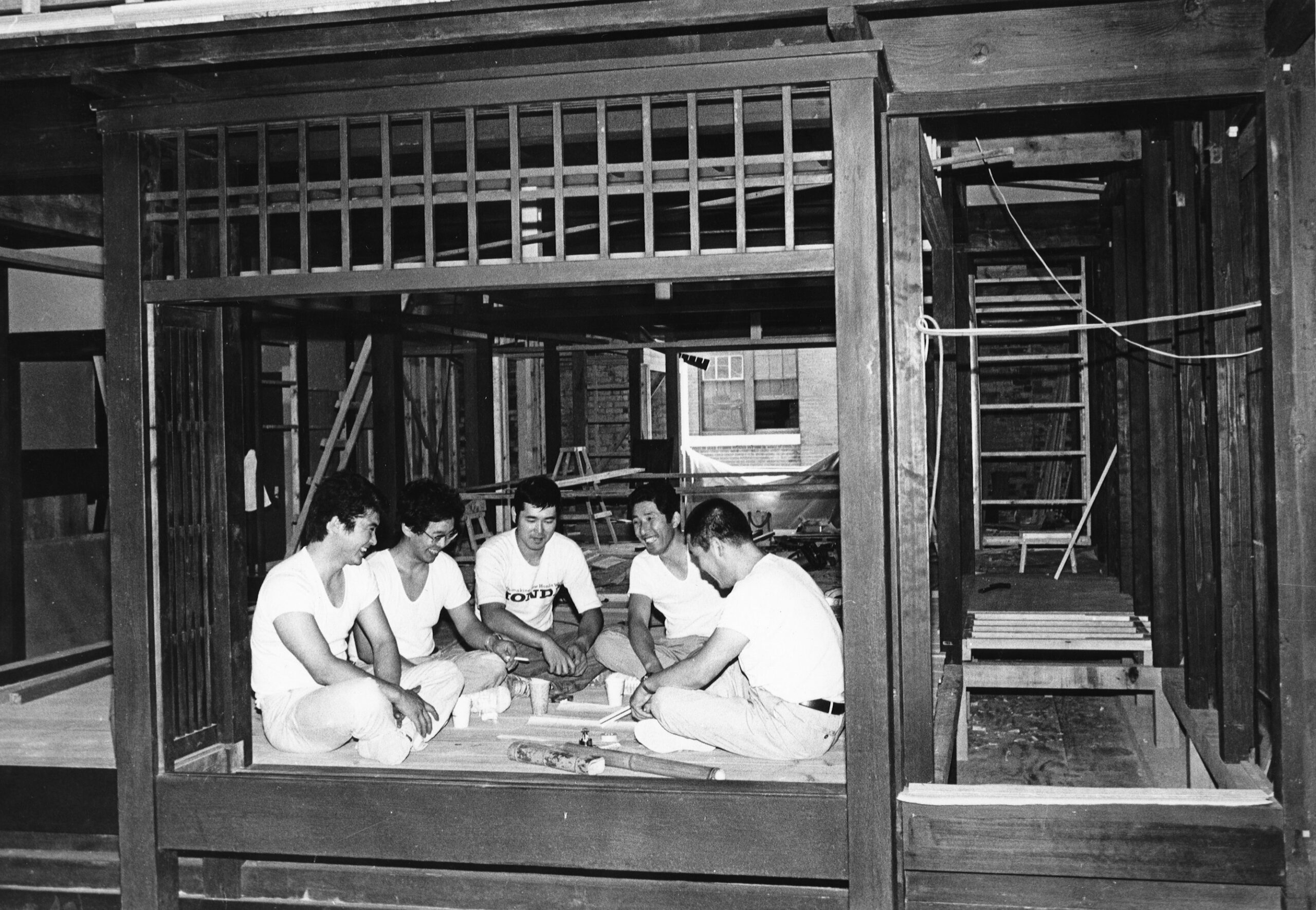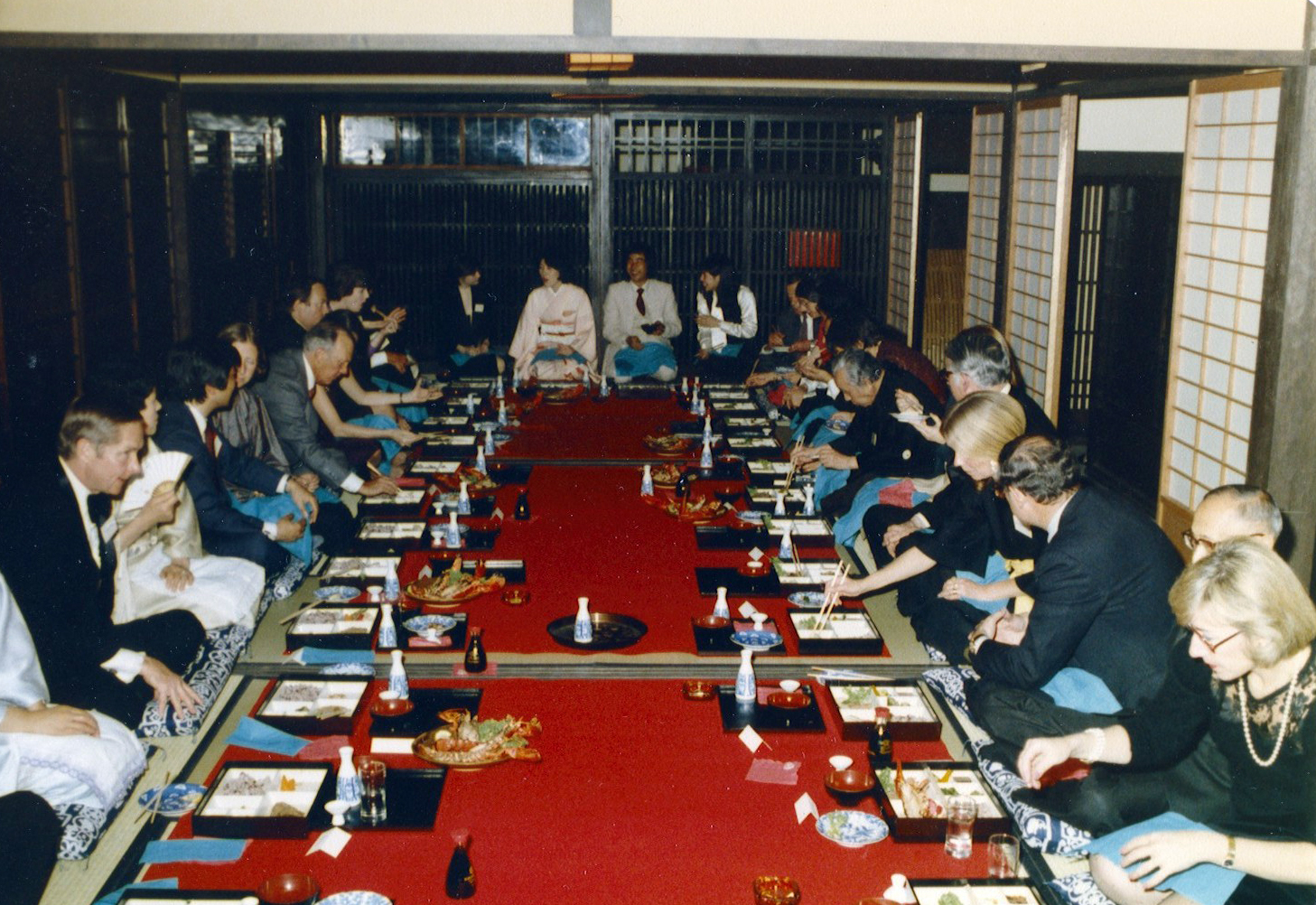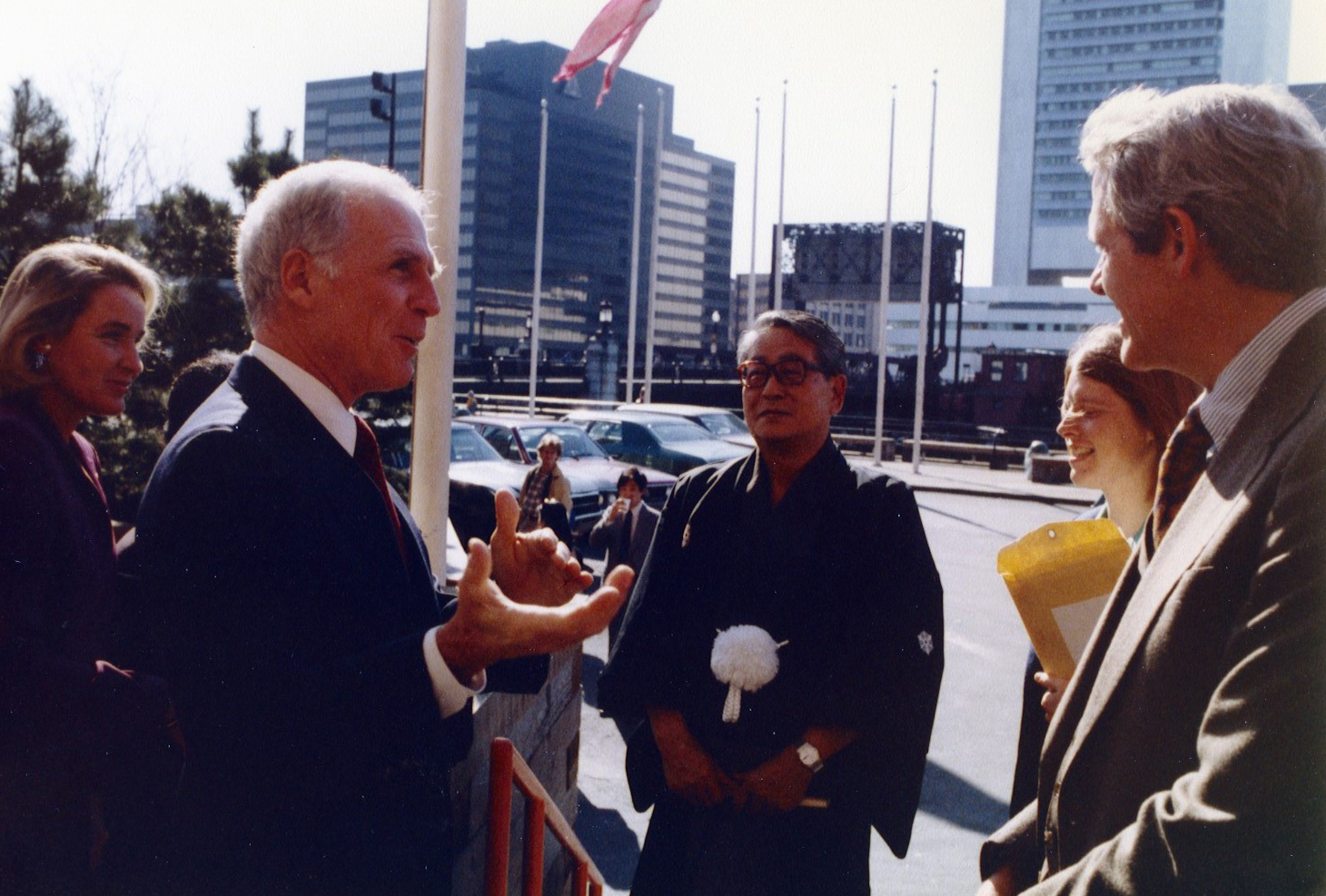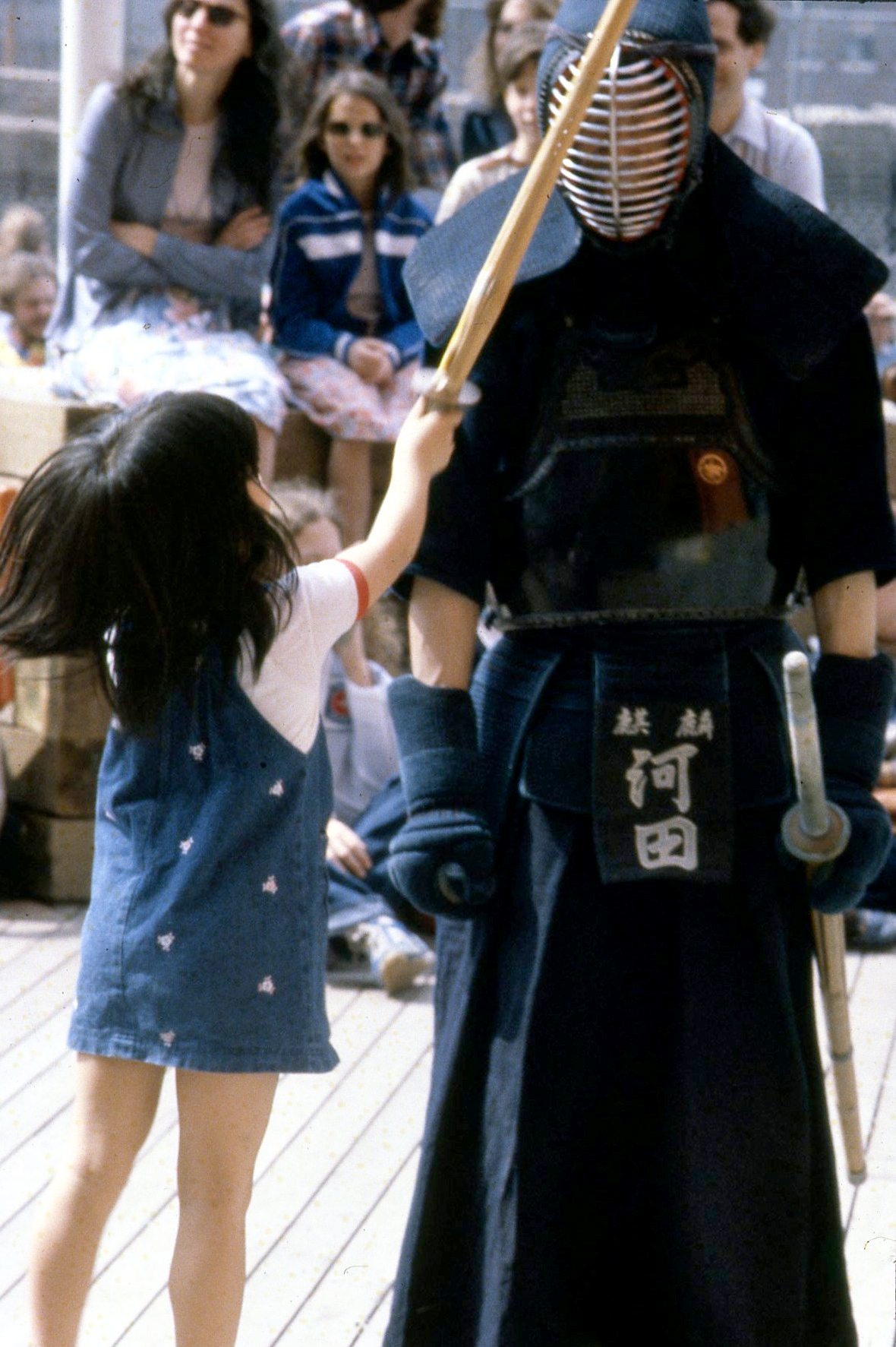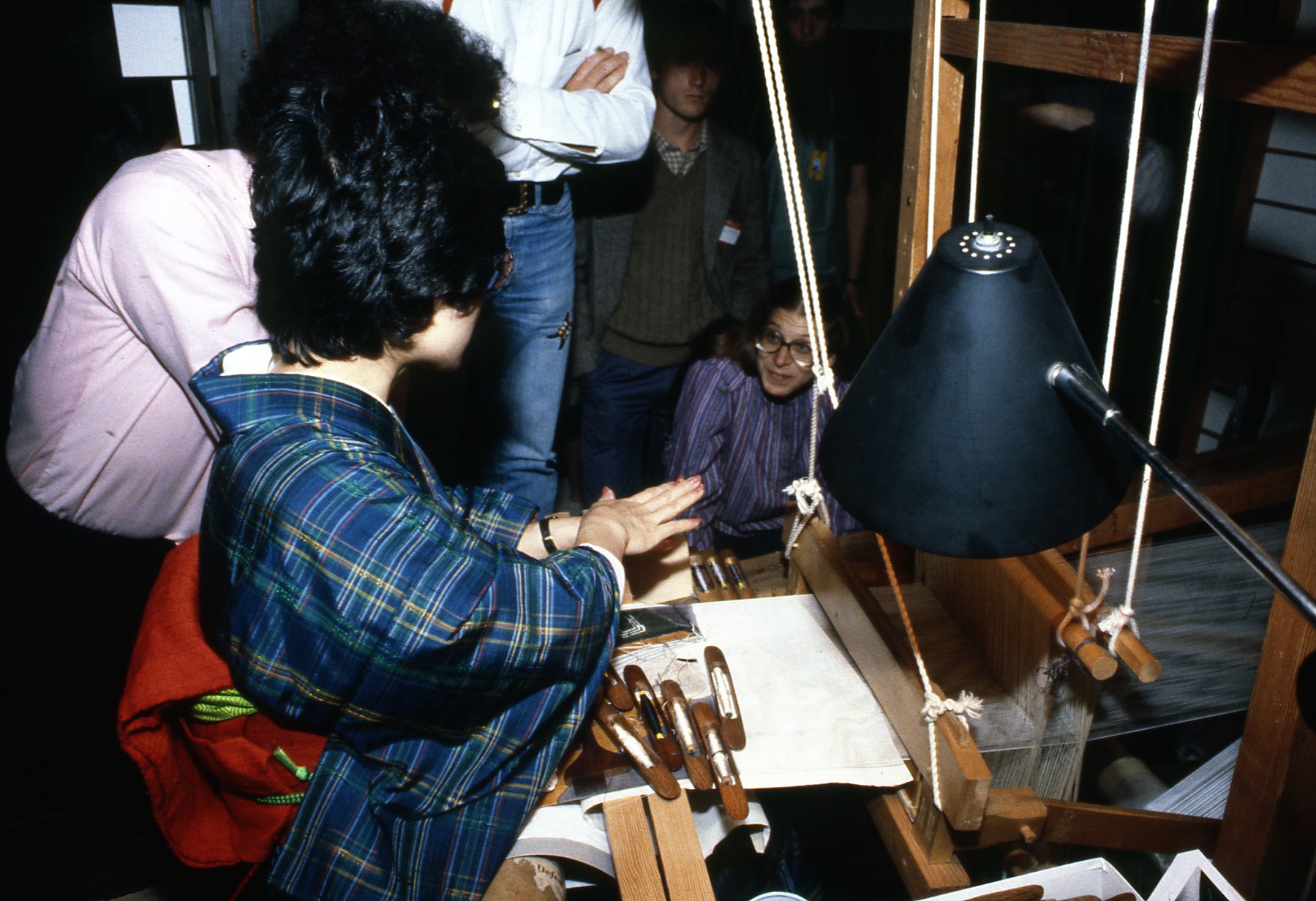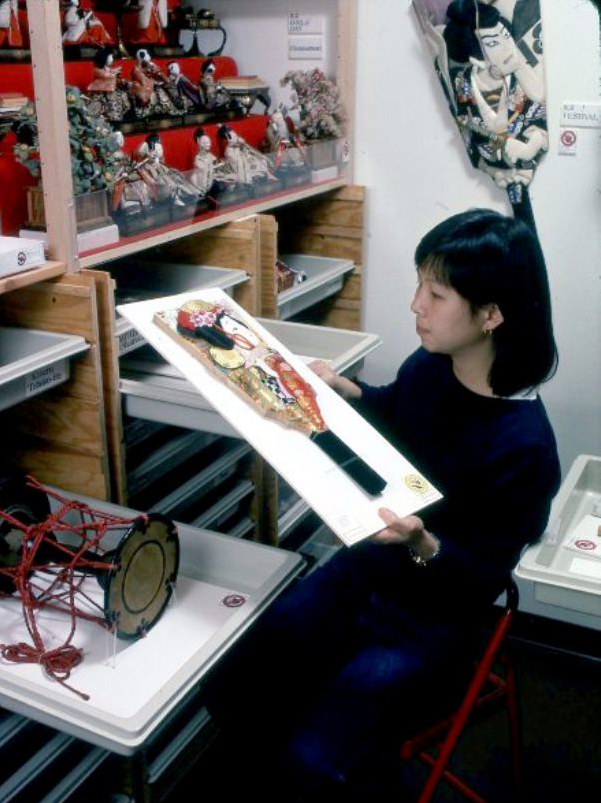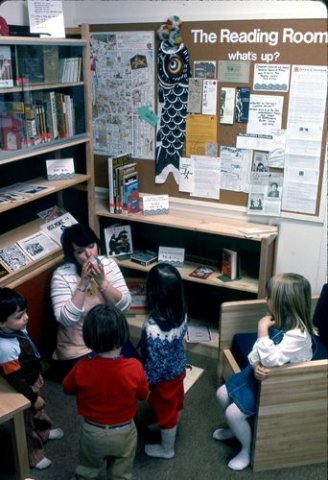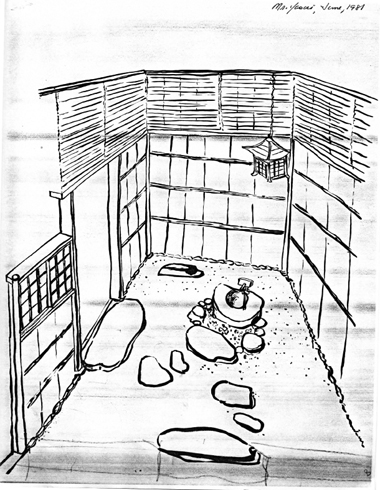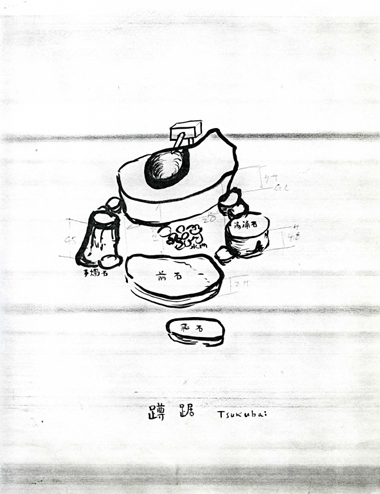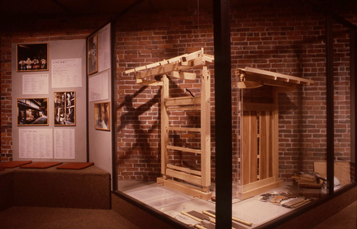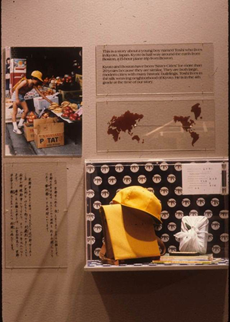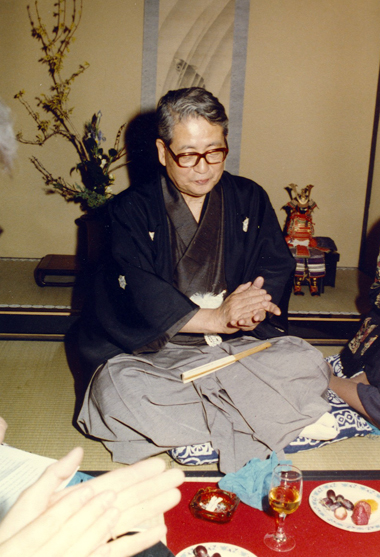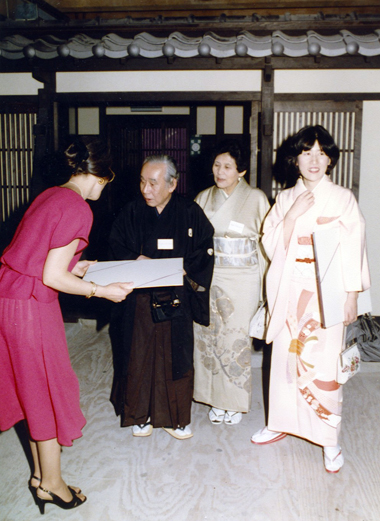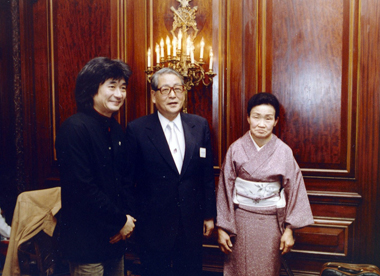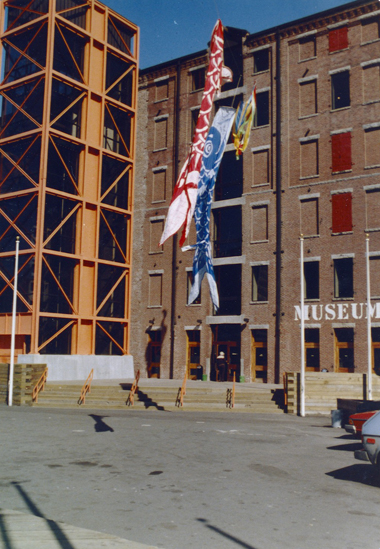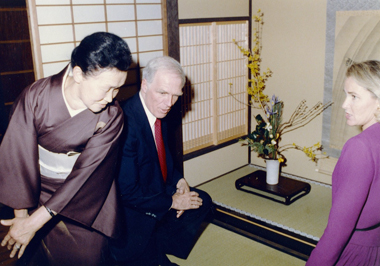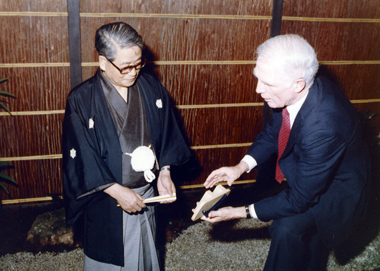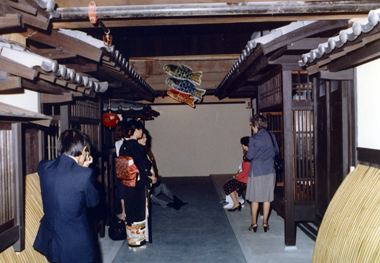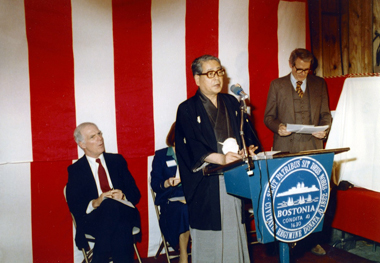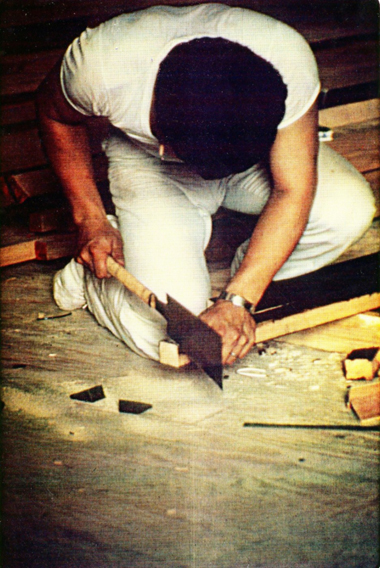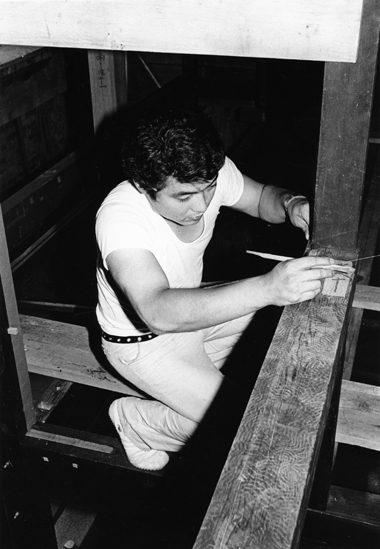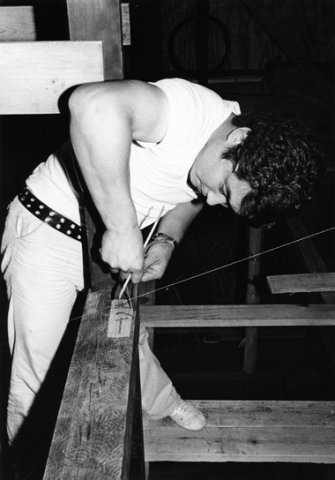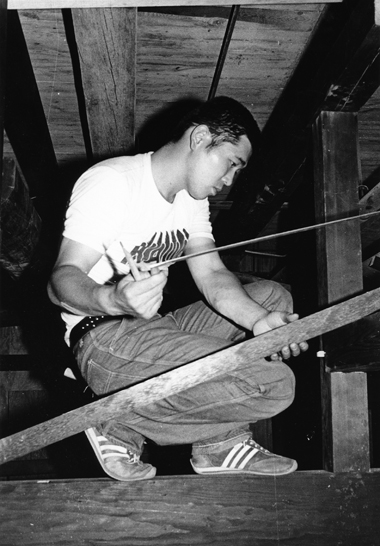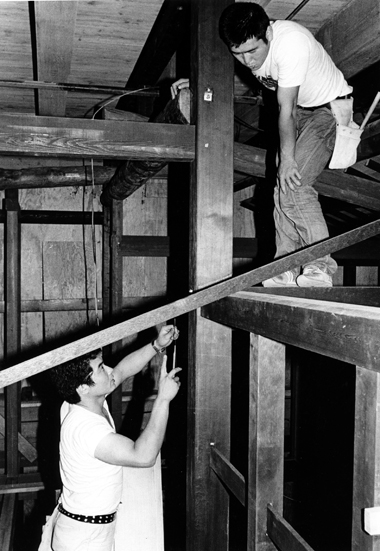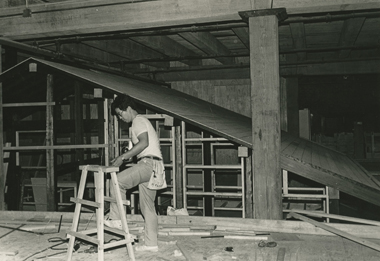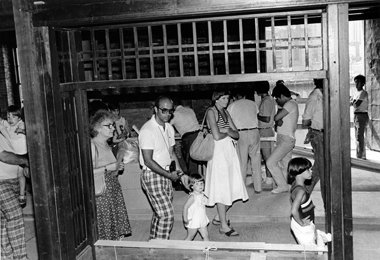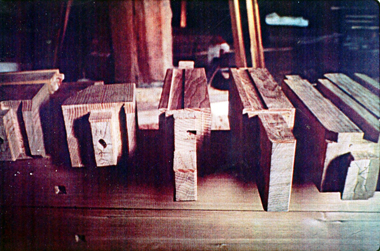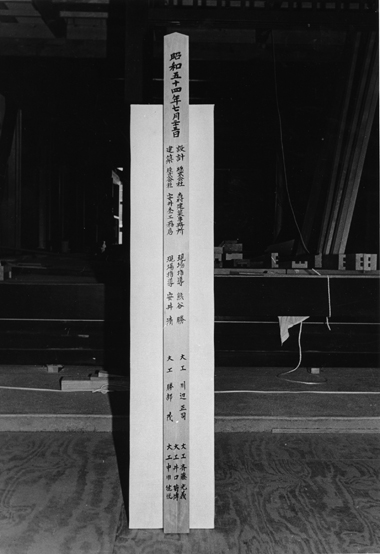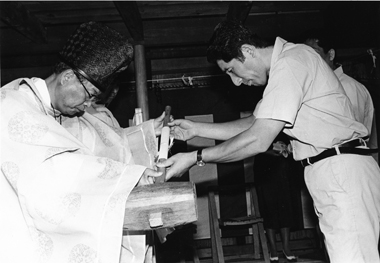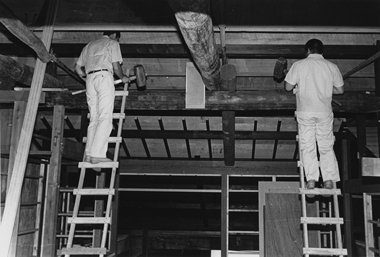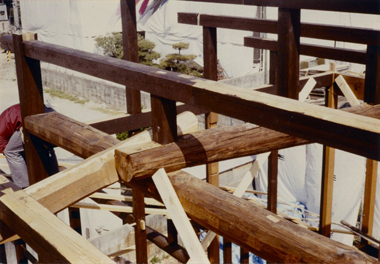History Timeline
Explore key moments in the history of teaching and learning about Japan at Boston Children’s Museum and about the installation of the Kyo no Machiya inside the Museum.
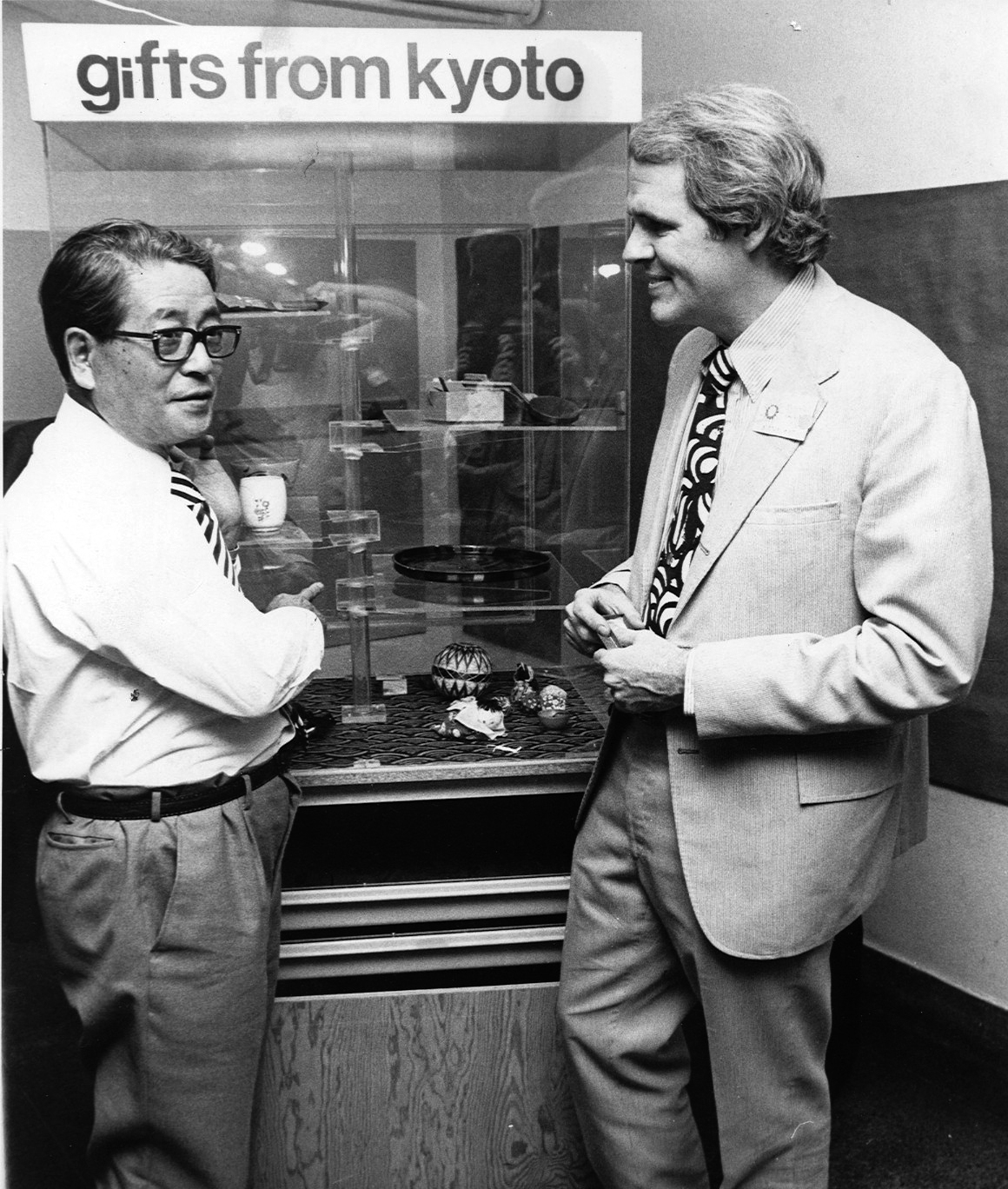
1976
During their visit to Boston to celebrate the US Bicentennial, Kyoto Mayor Funahashi and a delegation of 14 Kyoto residents visit Boston Children’s Museum, presenting gifts from the citizens of Kyoto.
FULL STORY >
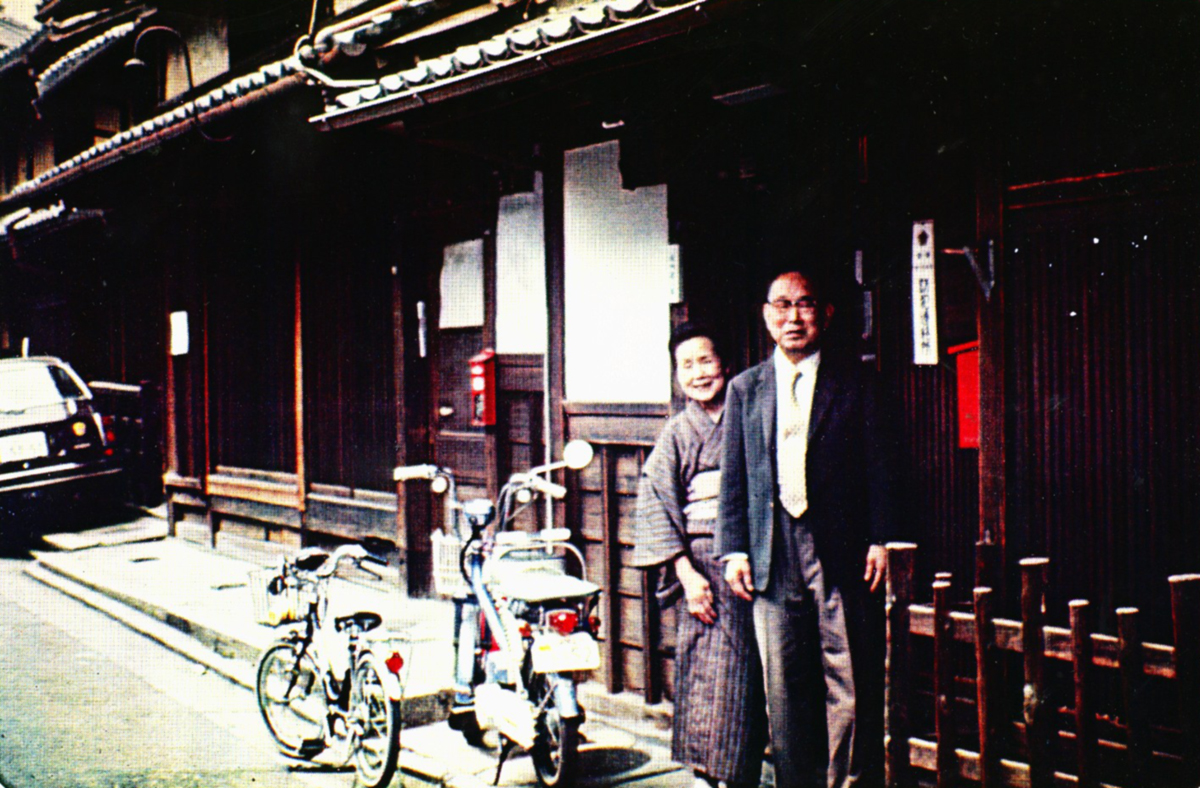
1978
The Sumiyama family own a traditional machiya located in the Nishijin area of Kyoto, which they are planning to replace with a modern house. Instead of tearing it down they offer it to the Museum.
FULL STORY >
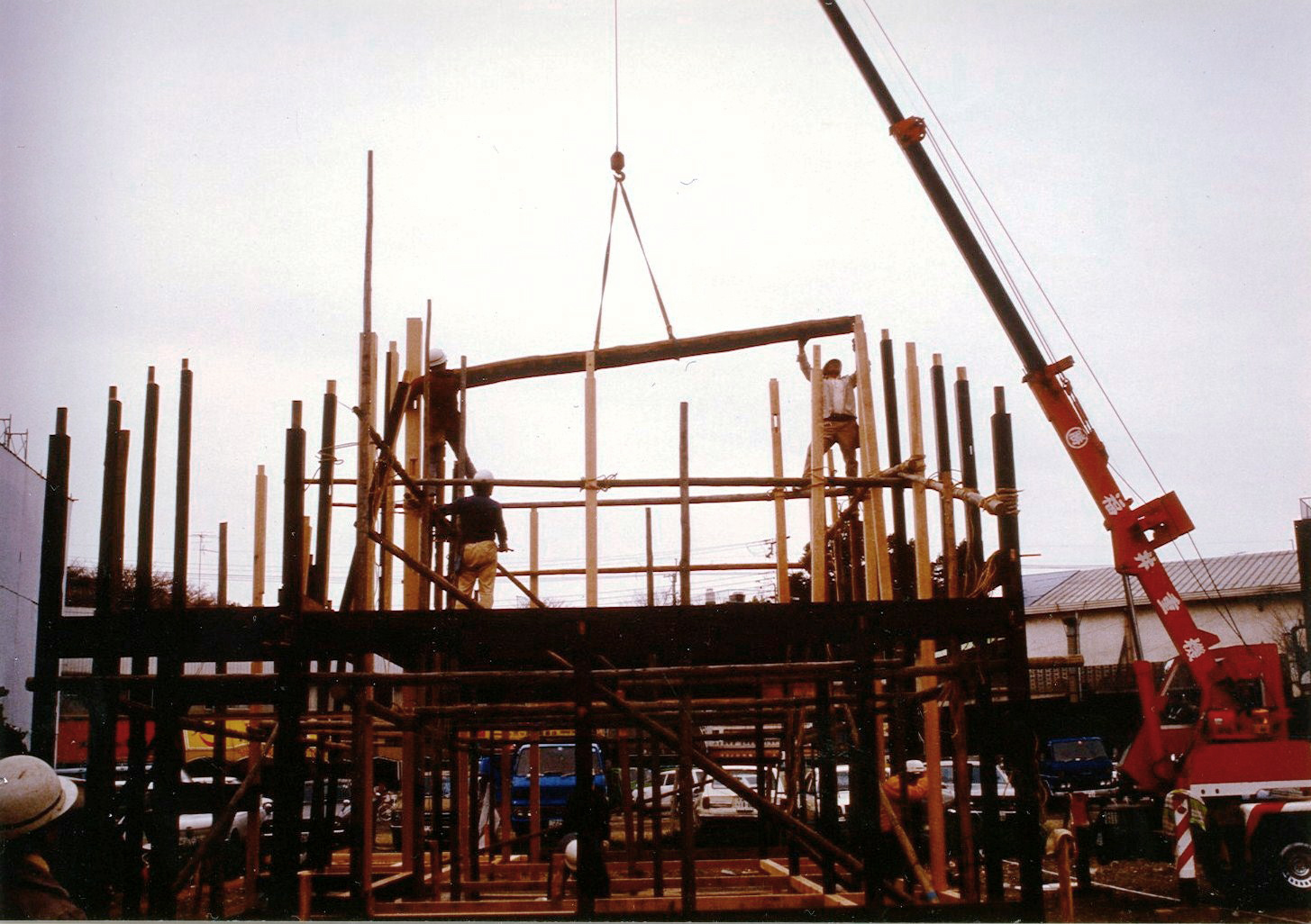
1979
The Japanese House is reconstructed on an empty lot in Kyoto to see if it is structurally sound and if all the wooden parts are viable.
FULL STORY >

1979
When the house frame was fully reconstructed, the Yasuimoku Komuten Company, representatives from Kyoto city government, and the Museum gathered for a Shinto ceremony to send off The Japanese House to Boston.
FULL STORY >

1979
The carpenters erect the frame of the house in three weeks. The third Shinto ceremony, the Muneagashiki, or Roof Beam Raising ceremony, celebrates the occasion.
FULL STORY >
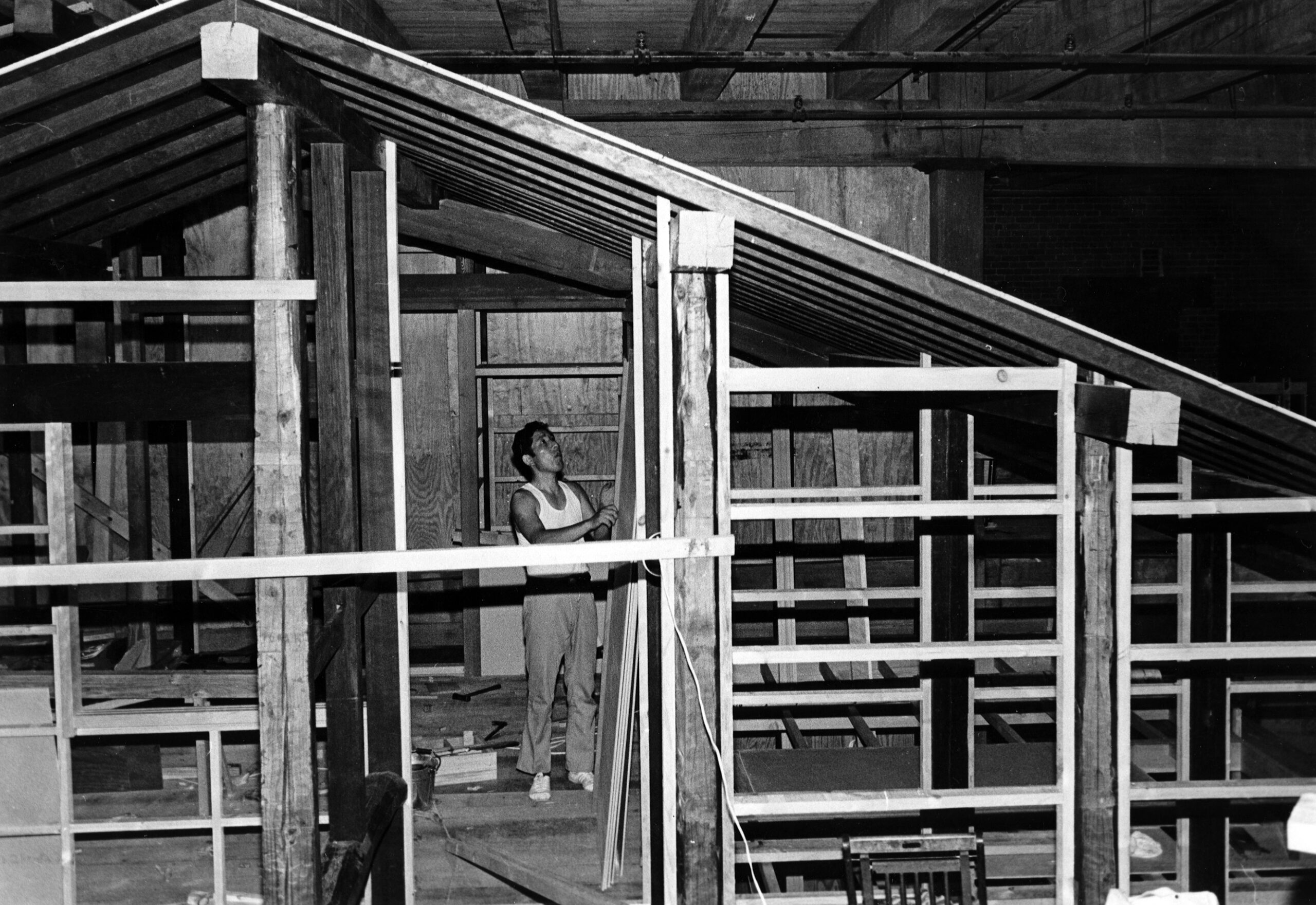
1979
After the frame is finished, the carpenters build the house as we see it today. Each day they came to the Museum and worked on the house, using traditional Japanese tools and techniques.
FULL STORY >

1980
Mayor Kevin White holds up the deed to The Japanese House, which Mayor Funahashi has just presented to him.
FULL STORY >
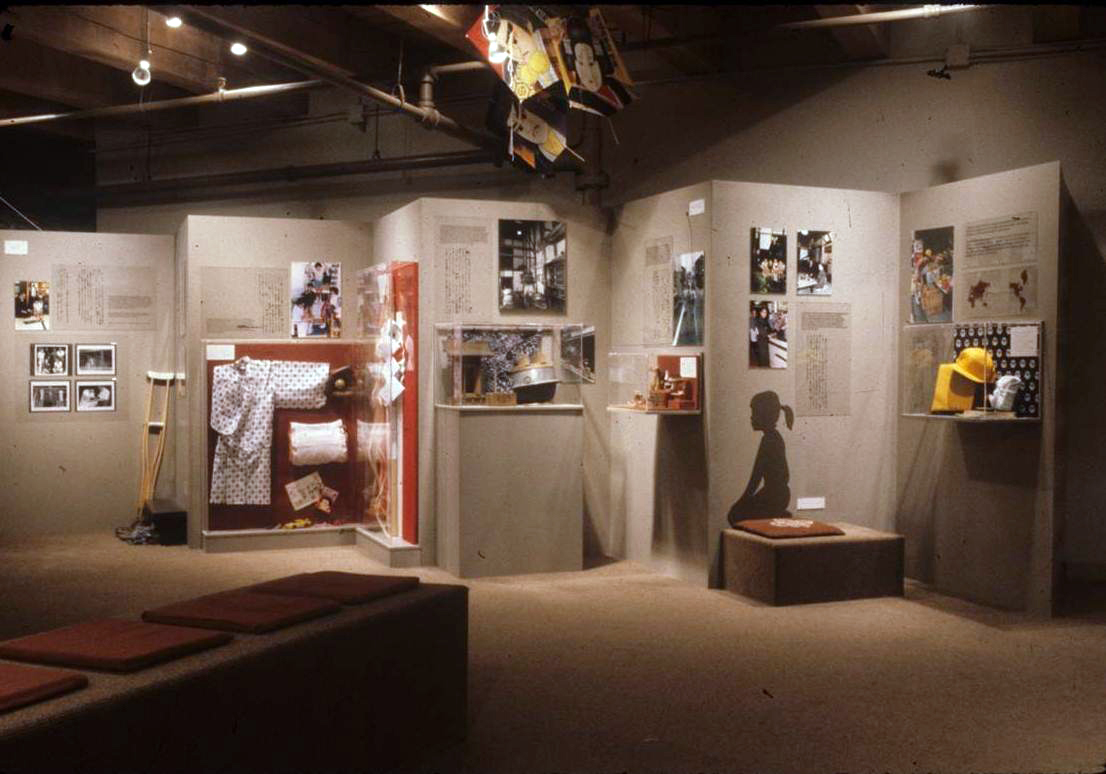
1981
As The Japanese House opens to enthusiastic visitors, the Museum expands the educational information that it offers to visitors about the house, Kyoto, and Japan.
FULL STORY >
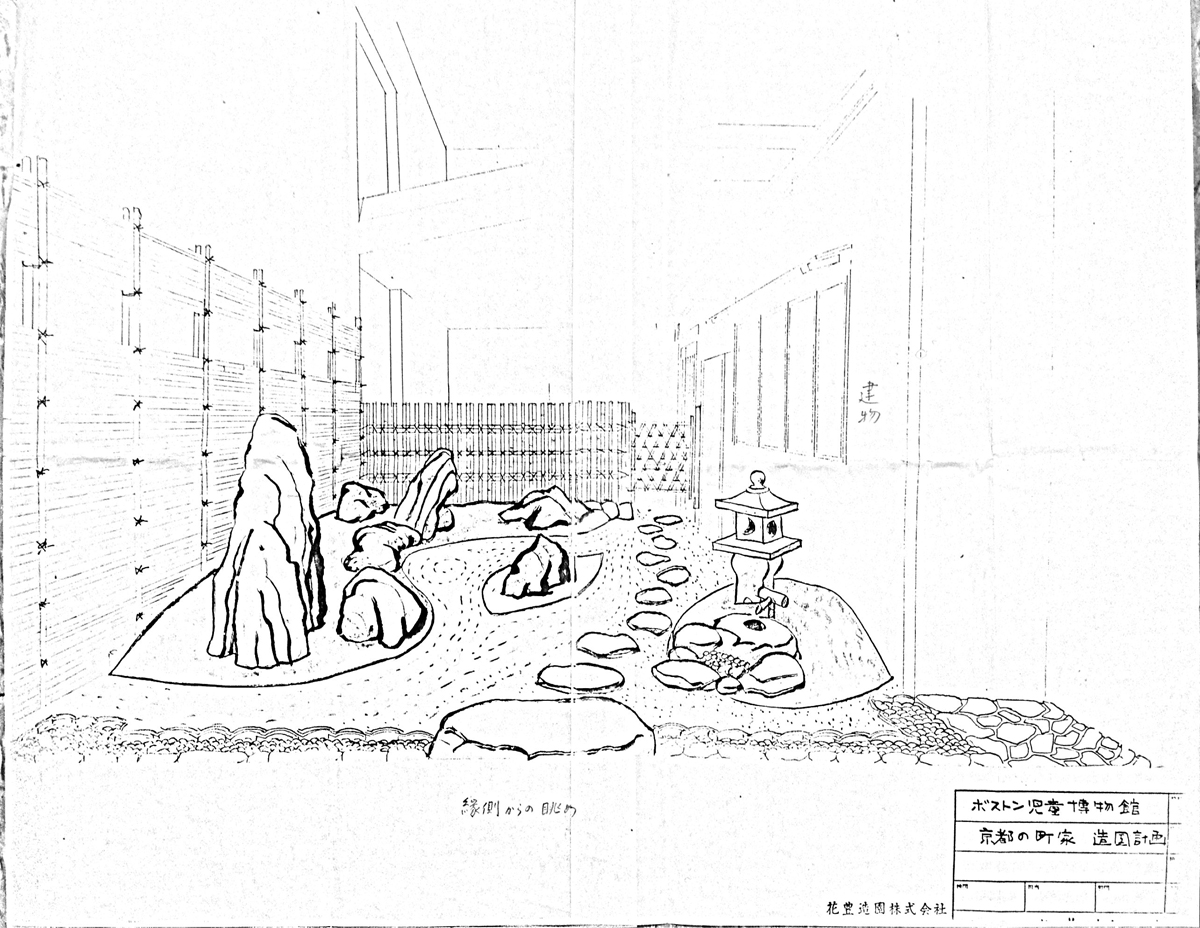
1981
Gardens are essential elements of Japanese houses, thus new ideas and plans must be created to make the garden work. Yasuimoku Komuten Company designed a garden for Boston Children’s Museum.
FULL STORY >

